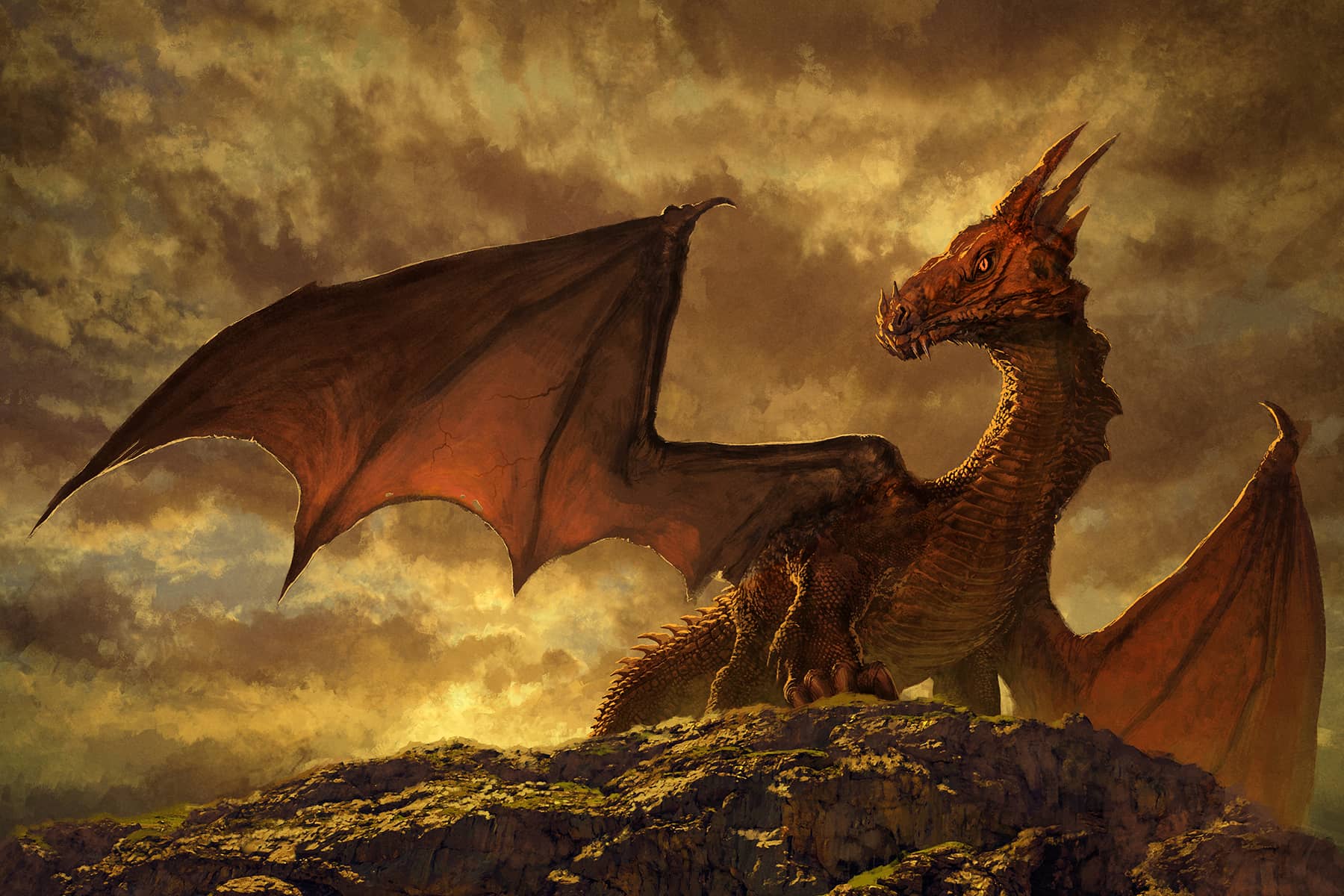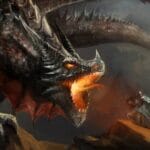Dragons, those mythical creatures with powerful wings and fiery breath, have captivated our imaginations for centuries. From East to West, these legendary beings have woven themselves into the fabric of human stories and beliefs. But what makes dragons so universally appealing? And how do their interpretations differ across cultures? Join us as we embark on a captivating journey through the rich tapestry of dragon legends.
Dragon Legends Across Different Cultures
Dragons, with their awe-inspiring presence and magical abilities, have been prominent figures in mythology for millennia. But their depictions vary significantly across cultures, reflecting diverse beliefs and values.
In the East, especially in China, dragons are revered as benevolent creatures symbolizing power, wisdom, and good fortune. Often associated with emperors and imperial authority, these serpentine beings are believed to control the elements, bringing life-giving rain and ensuring bountiful harvests.
Interestingly, the image of the Chinese dragon evolved over time. Early depictions resembled serpents, but as centuries passed, they acquired legs, wings, and the ability to breathe fire, ultimately transforming into the majestic creatures we recognize today.
Across the globe, in ancient Greece and Rome, dragons were less about benevolence and more about brute strength and terror. These monstrous serpents, often depicted with multiple heads and venomous breath, served as formidable foes for heroes like Hercules and Perseus.
Meanwhile, in Northern Europe, tales of wingless, venomous serpents known as wyrms sent chills down the spines of villagers. These creatures, often lurking in the shadows, embodied the dangers of the unknown and the untamed wilderness.
Medieval Europe, heavily influenced by the Church, cast dragons as demonic entities representing evil and temptation. They became the ultimate adversaries for valiant knights, their defeat symbolizing the triumph of good over evil.
Despite these contrasting interpretations, some common threads connect dragon myths across cultures. Their frequent association with water, whether rivers, lakes, or oceans, suggests a connection to the life-giving force of nature. Their intimidating physical attributes—scales, claws, and fangs—reflect their power and danger, often serving as a stark reminder of the untamed forces that surround us.
How are dragons represented in different cultures?
Dragons, those magnificent, scaled creatures with powerful wings, have been around in stories for ages, appearing in different cultures for thousands of years. But here’s the thing: dragons don’t always have the same “vibe” everywhere you go. They’re like cultural chameleons, shifting their meanings depending on who’s telling the story.
Cultural Interpretations of Dragons
- Ancient China: In China, dragons were practically VIPs. They were the symbol of power, wisdom, and good luck, often associated with the emperor and imperial authority. These dragons typically look long and serpentine, with four legs, scales, claws, and even whiskers—a mythical mashup of powerful animal attributes.
- Ancient Greece: The ancient Greeks went the ‘epic monster’ route. Their dragons were all about showcasing raw strength and striking fear into the hearts of heroes. Picture the multi-headed Hydra, a serpentine water beast with a nasty bite, or the Chimera, a fire-breathing hodgepodge of lion, goat, and snake.
- Medieval Europe: Medieval Europe had a different take: dragons were bad news. Heavily influenced by the Church, these dragons personified evil and temptation. Winged, scaly, and with a mouthful of razor-sharp teeth, they were the ultimate villains in countless tales, often challenging brave knights to a fearsome battle.
- Scandinavia: Over in Scandinavia, dragons were agents of chaos. Norse mythology paints them as forces of destruction and disorder, such as Jörmungandr, the World Serpent, who encircles the entire world, or Nidhogg, a monstrous dragon who constantly gnaws at the roots of Yggdrasil, the world tree.
- Modern Fantasy: Today, dragons have gotten a bit of a makeover. Modern fantasy often casts them in a more heroic or nuanced light. They’re still powerful and magical, sure, but now they’re more likely to be wise mentors or protectors, using their might for good—think Gandalf with scales and wings.
Universal Dragon Themes
Despite these variations, some aspects of dragon lore remain consistent across cultures:
- Connection to Water: Dragons almost always have some connection to water, whether it’s rivers, lakes, or even the vast ocean. This link likely comes from the idea that water is essential for life, making dragons seem even more potent and mysterious.
- Intimidating Appearance: Dragons wouldn’t be nearly as cool without their intimidating looks. Those scales, claws, and teeth? They’re not just for show—they reflect the sheer might and power these creatures represent.
- Battles Between Good and Evil: Many dragon myths involve heroes fighting them. It’s like this epic battle between good and evil, order and chaos, that just never gets old.
Delving Deeper
Want to delve deeper into the world of dragons? There’s a ton of fascinating research out there exploring their cultural significance and evolution. Would you like to learn additional details about dragons? 10 amazing facts about dragons could be a fun read.
What are the most common mythological themes across different cultures?
Myths, those timeless stories passed down through generations, offer fascinating glimpses into the human experience. They reflect our shared hopes, fears, and our attempts to make sense of the world around us. It’s fascinating to see how some themes pop up again and again in cultures from every corner of the globe.
Universal Themes in Mythology
- Divine Creation and Origin: Myths often explain the creation of the world and humankind through the actions of divine beings or powerful, mysterious forces. It’s as though our ancestors were trying to answer the age-old questions: “Where did we come from?” and “Why are we here?”.
- Heroes’ Journey and Transformations: This is a classic! Think about your favorite myths and legends—chances are they feature a hero who faces incredible challenges, undergoes trials, and emerges forever changed. This theme of transformation through adversity is something that resonates deeply with people across cultures, reminding us that we too can overcome challenges and emerge stronger.
- Cosmic Balance and Conflict: Many myths feature epic battles between opposing forces: good and evil, light and darkness, order and chaos. These stories might reflect a fundamental human understanding of the world—that there’s a constant push and pull, a delicate balance that must be maintained to prevent utter disaster.
- Metaphors for Human Experience: Myths aren’t just about gods and monsters; they’re also about us. They delve into the complexities of love, loss, courage, fear, and everything in between. By using metaphors and symbolism, myths help us explore and understand our emotions and experiences in a safe, imaginative space.
- Echoes of Shared Ancestors: The striking similarities in mythological themes across cultures have led some experts to believe that these stories might have originated from a common ancestral source. It’s like a global game of telephone, with stories changing slightly with each retelling, yet retaining their core essence. Others suggest that these themes are simply universal expressions of the human experience, regardless of geographic location or cultural background.
Who is the most powerful mythological dragon?
Ranking mythological creatures in terms of power is no easy feat! It’s like comparing apples and oranges—or perhaps fire-breathing serpents and eight-headed hydras. Each dragon has unique skills, strengths, and weaknesses, making it nearly impossible to declare a definitive winner. However, we can explore some of the top contenders for this mythical title.
Dragon Powerhouse Contenders
- Chinese Dragon: Imagine a creature that controls the weather, can shapeshift between a snake and a dragon, and is basically best buds with the Emperor. That’s the Chinese dragon! They’re all about good luck, wisdom, and being in charge.
- Hydra (Greek Mythology): This multi-headed monster from Greek mythology is the definition of “don’t mess with me.” Chop off one head, and two more grow back! Even the mighty Hercules had to get seriously creative to defeat this beast, whose poisonous breath and blood were deadly to anyone who dared approach.
- Feathered Serpent (Quetzalcoatl): Hailing from Mesoamerican cultures, the Feathered Serpent, often referred to as Quetzalcoatl, was more than just a powerful dragon. This deity brought rain, ensured good harvests, and was deeply revered by ancient civilizations.
- Yamata no Orochi (Japanese Mythology): Japan boasts Yamata no Orochi, a massive eight-headed dragon who demanded sacrifices and wreaked havoc. It took the storm god Susanoo and his magical sword to finally put an end to this dragon’s reign of terror.
- Nidhogg (Norse Mythology): Lurking in the shadows of Norse mythology is Nidhogg, a monstrous dragon who constantly gnaws at the roots of Yggdrasil, the world tree that connects the nine realms. Talk about holding a grudge!
The True Power of Dragons
While crowning a single “most powerful” dragon remains elusive, perhaps their true power lies in the stories we tell. They teach us about the awesome power of nature, the importance of courage, and the potential consequences of greed and unchecked ambition. Isn’t that a different kind of power altogether?
Why are dragon myths universal?
Dragons, with their fiery breath and majestic wings, have captured human imagination for centuries. But why do these mythical creatures appear in stories from every corner of the globe? Their enduring presence across cultures points toward a deeper, perhaps even primal, connection between humans and the idea of dragons.
Exploring the Universality of Dragon Myths
- Symbolism of Deepest Fears and Fascinations: Dragons likely represent our deepest fears and fascinations with the natural world. They embody the awe-inspiring power of storms, earthquakes, and other natural phenomena that can both terrify and inspire us.
- Innate Human Connection to Dragon Archetypes: Their cross-cultural prevalence might suggest an innate human connection to dragon archetypes, transcending geographical and cultural boundaries. Could it be that the human psyche is hardwired to imagine such creatures, weaving them into our collective unconscious and mythology?
- Diverse Meanings and Associations: Dragons don’t adhere to a single, rigid definition. Instead, their meaning morphs and adapts depending on the culture and context. They can symbolize imperial power and authority in one story, while representing chaos and destruction in another. This flexibility allows them to embody both the revered and feared aspects of human existence.
- Cultural Exchange and Adaptations: The evolution of dragon folklore reflects cultural exchanges and adaptations, showcasing their ongoing relevance and adaptability. As civilizations interacted through trade, conquest, and exploration, dragon myths likely spread and intertwined, incorporating new elements and interpretations along the way.
How Many Cultures Have Dragon Myths?
It’s nearly impossible to pinpoint precisely how many cultures have dragon myths. It’s like trying to count all the stars in the sky—a daunting, if not impossible, endeavor. However, we can confidently assert that dragons pop up in a ton of cultures worldwide.
Dragons: A Universal Language of Storytelling
- Global Prevalence: Dragons are like a universal language of storytelling, with each culture adding its unique dialect and flair. They appear in ancient tales whispered around campfires, in intricate works of art, and even in modern fantasy novels, movies, and video games.
- Common Threads in Dragon Myths: What’s intriguing is that even with variations in appearance and temperament, dragon myths often share some common threads. They typically embody the mysterious, the powerful, or even the dangerous. That age-old struggle between good and evil, order and chaos—dragons often find themselves at the heart of these narratives.
The Enduring Allure of Dragons
Dragons continue to spark our imaginations, reminding us that even in a world that often feels mundane and ordinary, there’s always room for a little magic and awe. Perhaps that’s why we keep telling their stories.
Are there dragons in African mythology?
While dragons might be most commonly associated with European and Asian cultures, Africa has its own rich tapestry of dragon-like creatures woven into its myths and legends. However, African dragons often differ in appearance and symbolism from their more globally recognized counterparts.
African Dragons: Spirits and Serpents
Instead of fire-breathing behemoths, imagine potent spirits often resembling snakes, embodying the raw energy of nature—from the destructive force of a raging storm to the life-giving flow of a peaceful river.
- Apep (Egyptian Mythology): Ancient Egyptians told tales of Apep, a giant serpent who personified chaos and darkness, locked in an eternal struggle with the sun god Ra.
- Oduduwa (Yoruba Mythology): The Yoruba people of West Africa honored Oduduwa, a divine serpent credited with creating the world.
The Enigmatic Nature of African Dragons
One of the things that makes African dragons so intriguing is that their stories haven’t been studied as extensively as those from other cultures. This means there’s a whole treasure trove of stories, beliefs, and symbolism waiting to be unearthed.
- Protectors of Sacred Places: Evidence suggests that African dragons are more than just fearsome entities. They often serve as wise guardians of sacred places, charged with keeping malevolent spirits at bay and maintaining balance within the natural world.
What do dragons represent in Japanese culture?
In Japan, dragons, known as Ryū or Tatsu, hold a place of honor and reverence. Unlike the fearsome beasts often depicted in Western cultures, Japanese dragons are regarded as benevolent beings, embodying power, wisdom, and good fortune.
Japanese Dragons: Symbols of Benevolence and Power
- Unique Appearance: Unlike their Western counterparts, Japanese dragons typically possess sleek, serpentine bodies covered in shimmering scales, often sporting multiple heads. Each head is believed to represent a different virtue or power, adding to their mystique and majesty.
- Connection to the Emperors: Japanese dragons share a deep connection to the emperors. Legend has it that Japan’s very first emperor, Jimmu, was a descendant of dragons! This lineage cemented dragons as symbols of authority, power, and the divine right to rule.
- Artistic Inspiration: Japanese dragons have captivated artists for centuries. They adorn paintings, sculptures, intricate woodblock prints, and even everyday objects, showcasing their enduring presence in Japanese culture.
- Festivals and Celebrations: Dragons aren’t confined to ancient myths and art museums. They feature prominently in festivals, such as the vibrant Dragon Boat Festival. During this event, teams race long, colorful boats adorned with dragon heads, a spectacle that celebrates strength, teamwork, and the promise of good fortune.
Enduring Legacy
Even today, Japanese dragons continue to inspire artists, designers, and storytellers. They appear in anime, manga, video games, and contemporary art, demonstrating their lasting impact on Japanese culture.
What do Dragons Symbolize in European Culture?
In European culture, dragon symbolism weaves a complex tapestry of both positive and negative connotations. These powerful creatures, often envisioned as colossal, fire-breathing beasts, embody a captivating duality that has fascinated people for centuries.
European Dragons: A Legacy of Duality
- Forces of Nature: Dragons often symbolize the raw, untamed power of the natural world. They represent the awe-inspiring, sometimes destructive, forces we strive to comprehend and, in some cases, control. They remind us that nature’s fury can be both beautiful and terrifying.
- Medieval Symbolism: In medieval times, bestiaries—those illustrated compendiums of mythical creatures—often portrayed dragons as the epitome of evil. They lurked in the shadows, embodying deceit, treachery, and the temptations that could lead even the most devout astray. Their defeat at the hands of valiant knights and saints reinforced the triumph of good over evil.
- Strength and Authority: Yet, dragon symbolism wasn’t always relegated to the villainous. In some European traditions, they represented strength, power, and even wisdom. Royalty, for example, sometimes incorporated dragons into their heraldry, associating themselves with the creature’s might and majesty.
- Celtic Perspectives: The Celts offered a unique perspective, often linking dragons with magic, wisdom, and the element of water—a departure from the fiery, destructive imagery often found in other European traditions.
A Timeless Reflection of Ourselves
Ultimately, European dragons, much like their counterparts in other cultures, are more than just mythical creatures. They serve as mirrors, reflecting our fears, aspirations, and our ongoing struggle to understand the vast, often unpredictable forces that shape our lives. It’s this duality—the captivating blend of fear and fascination—that keeps us enthralled by dragon lore even today.
What do dragons represent in Chinese culture?
In China, dragons hold a place of paramount importance, their imagery and symbolism deeply woven into the fabric of Chinese culture. These revered creatures embody power, wisdom, and auspicious fortune, serving as potent symbols of cosmic harmony and the enduring spirit of China.
Chinese Dragons: Benevolent Guardians and Bringers of Prosperity
- Benevolent and Wise: Unlike their Western counterparts, Chinese dragons are not viewed as fearsome beasts. Instead, they are benevolent and wise beings, embodying strength, good fortune, and the promise of abundance.
- Imperial Authority and Divine Descent: The Chinese emperors believed they were descendants of dragons, linking these mythical creatures to imperial authority, divine right to rule, and the Mandate of Heaven. Dragons were often featured on imperial robes, architecture, and artwork, symbolizing the emperor’s power and connection to the divine.
- Guardians and Protectors: Chinese dragons were also seen as protectors, guarding sacred places, bringing life-giving rain, and ensuring bountiful harvests. Their presence was believed to ward off evil spirits and bring good luck.
- Spiritual Significance: Dragons also hold profound religious and philosophical significance in China. In Buddhism, Confucianism, and Taoism, they represent strength, courage, and even enlightenment, demonstrating their importance beyond the realm of myth and legend.
- Ancient Legends and Festivals: Chinese dragon legends date back over 5,000 years. These stories often depict dragons dwelling in distant waters, possessing the ability to fly, and wielding control over the elements. They are celebrated with colorful festivals, impressive dances, and awe-inspiring artwork, showcasing their central role in Chinese culture.
What Culture Celebrates Dragons?
It’s difficult to confine the celebration of dragons to just one culture. These magnificent creatures grace the myths, legends, and artistic traditions of societies around the globe.
Dragon Celebrations Across Cultures
- China: As we’ve explored, dragons in China are practically superstars. They represent imperial power, good luck, wisdom, and the promise of prosperity. From the intricate dragon dances during Lunar New Year celebrations to the awe-inspiring dragon boat races, these creatures are honored and celebrated throughout the year.
- Africa: While less widely known, African dragon mythology is just as rich and diverse, with each culture weaving its own unique interpretations and traditions. While research into African dragons is still ongoing, their presence hints at a deep connection to the power and mystery of the natural world.
- Europe: European dragon traditions, while often depicting dragons as fearsome adversaries, also acknowledge their power and majesty. From the legendary tales of St. George slaying the dragon to the incorporation of dragons into heraldry and national symbolism, these creatures have left an indelible mark on European culture.
- Japan: Japanese dragons, with their serpentine grace, shimmering scales, and benevolent nature, are deeply woven into the cultural fabric of Japan. They are celebrated through festivals, revered as symbols of imperial power, and admired for their wisdom and strength.
A Shared Human Fascination
The celebration of dragons, in its myriad forms, speaks to a shared human experience. These mythical creatures allow us to explore our anxieties and aspirations, to marvel at the power of nature, and to confront the unknown with a blend of fear and fascination.
- China II Review: Delicious Food & Speedy Service - April 17, 2025
- Understand Virginia’s Flag: History & Debate - April 17, 2025
- Explore Long Island’s Map: Unique Regions & Insights - April 17, 2025
















